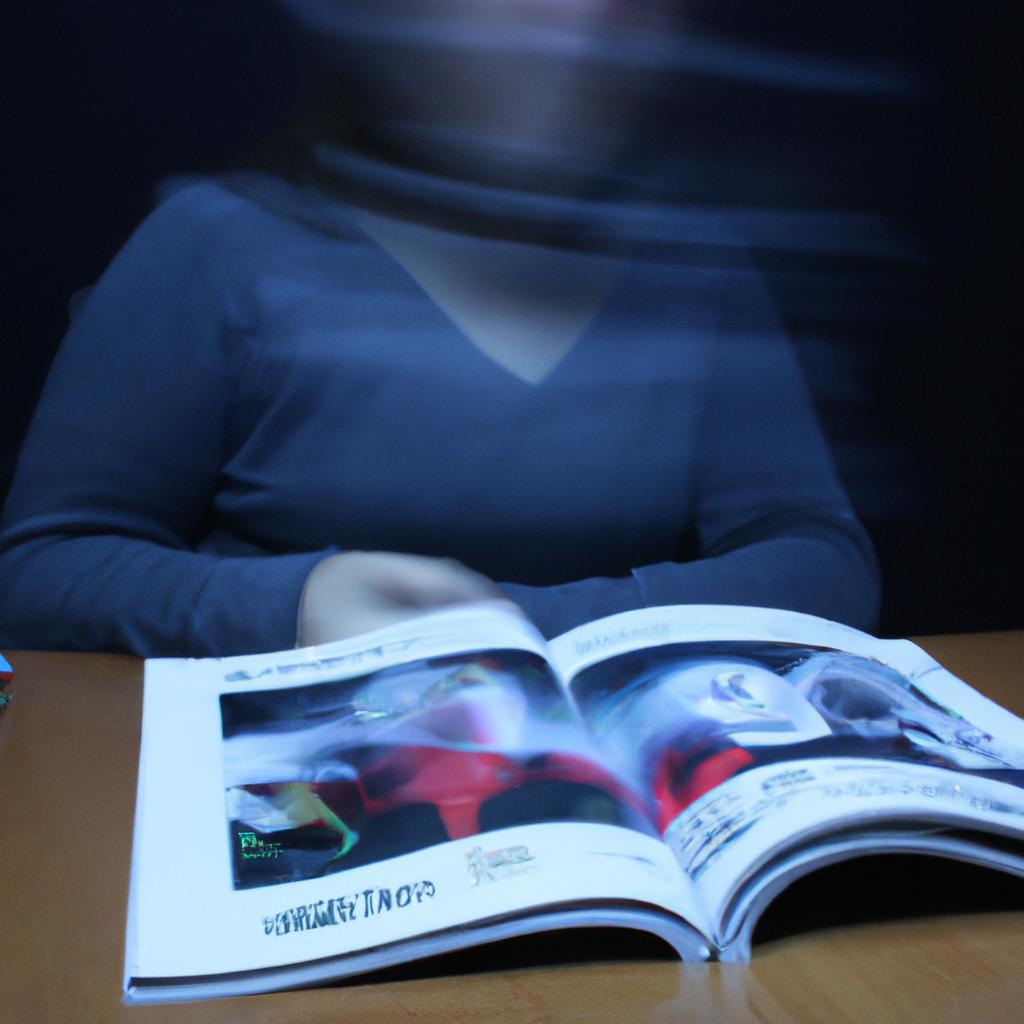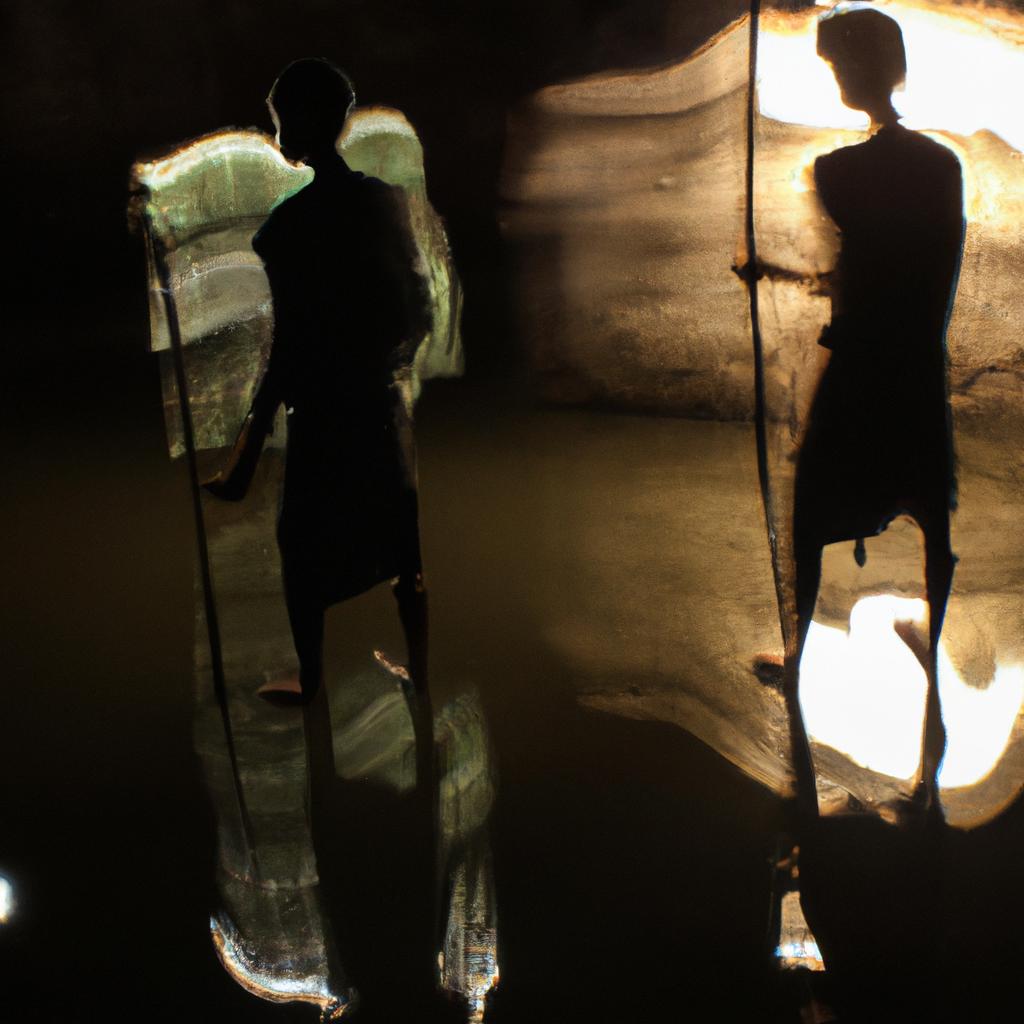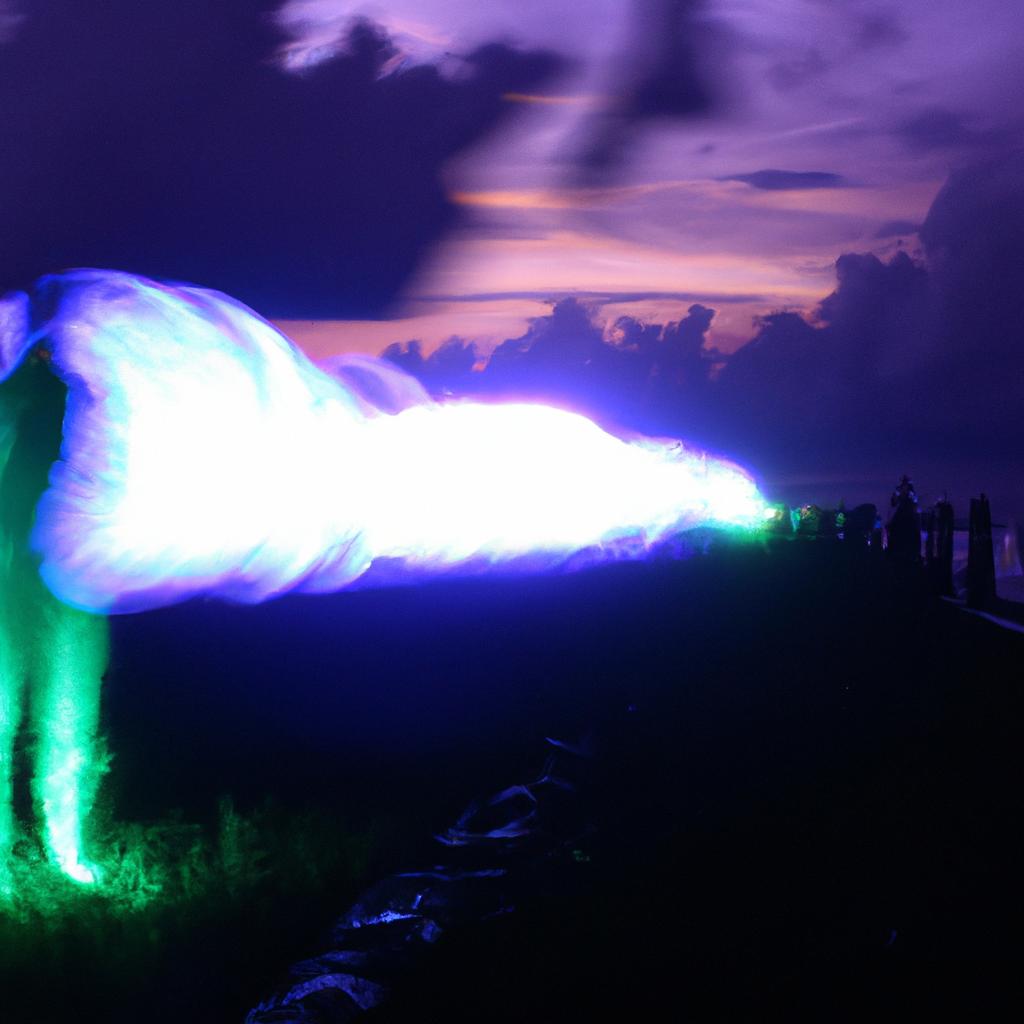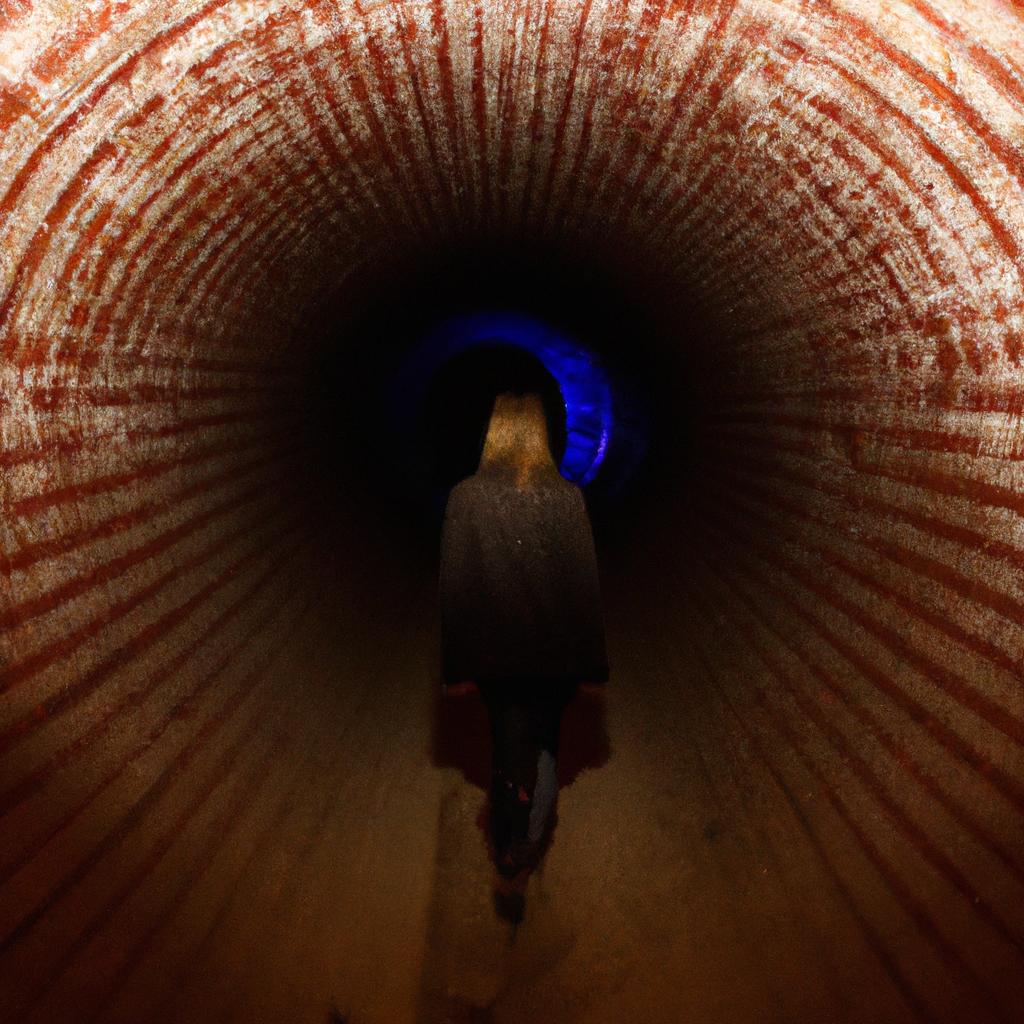Out-of-Body Experiences and Near-Death: Paranormal Realms

Out-of-body experiences (OBEs) and near-death experiences (NDEs) have long fascinated researchers, psychologists, and practitioners of the paranormal. These phenomena involve individuals claiming to have witnessed their own consciousness separating from their physical bodies and entering alternate realms or dimensions. One intriguing example is the case of Jane Doe, a 45-year-old woman who underwent a life-threatening surgery and reported an OBE during which she observed her body from above the operating table. Such accounts raise profound questions about the nature of human consciousness, the existence of parallel realities, and the possibility of an afterlife.
The study of OBEs and NDEs has gained attention not only due to its enthralling anecdotes but also because it offers insights into our understanding of human cognition and perception. Scholars argue that these extraordinary experiences challenge conventional notions about the boundaries between mind and body, suggesting that consciousness may exist independently from corporeal form. Moreover, some researchers propose that these episodes might provide evidence for non-physical aspects of reality beyond our current scientific comprehension. By delving into this enigmatic territory inhabited by OBEs and NDEs, we can explore uncharted territories in psychology, philosophy, and metaphysics while attempting to unravel the mysteries surrounding human consciousness and the nature of existence itself.
Definition of Out-of-Body Experiences
Out-of-body experiences (OBEs) refer to the phenomenon in which an individual perceives their consciousness as being separated from their physical body, allowing them to observe themselves and their surroundings from a perspective outside of their corporeal form. This dissociation can be experienced spontaneously or induced through various techniques such as meditation or near-death encounters. For instance, imagine a person lying on an operating table during surgery suddenly finding themselves floating above, observing the medical team working diligently below.
Understanding OBEs requires examining the characteristics that often accompany these experiences. Individuals who have reported OBEs commonly describe feelings of weightlessness and detachment from their bodies, along with enhanced mental clarity and heightened sensory perception. Moreover, they frequently report traveling through space or visiting different locations while detached from their physical forms.
To provide further insight into the nature of OBEs, it is useful to explore some common elements associated with these extraordinary occurrences:
- A sense of liberation and freedom from bodily constraints
- Profound spiritual or transcendental experiences
- Enhanced perceptions beyond normal sensory capacities
- Altered states of consciousness leading to self-reflection and personal growth
In addition to understanding the subjective aspects of OBEs, researchers also strive to examine this phenomenon objectively. In pursuit of scientific investigation, studies have utilized neuroimaging techniques like functional magnetic resonance imaging (fMRI) to explore brain activity during OBE episodes. These efforts aim to unravel the underlying mechanisms behind such extraordinary experiences by investigating specific regions within the brain responsible for spatial awareness and self-perception.
Overall, exploring out-of-body experiences provides valuable insights into altered states of consciousness and human cognition. By delving into individuals’ accounts and studying them empirically using advanced technologies, we deepen our understanding of this fascinating realm where mind transcends the confines of the physical body.
The subsequent section will delve into historical accounts of out-of-body experiences, shedding light on the prevalence and cultural significance of this phenomenon throughout history.
Historical Accounts of Out-of-Body Experiences
Out-of-Body Experiences (OBEs) have fascinated humans for centuries, with numerous historical accounts describing individuals who claim to have temporarily left their physical bodies and experienced a separate state of consciousness. Such experiences often occur during near-death situations or in altered states of mind induced by meditation or extreme stress. In this section, we will explore some notable historical accounts that shed light on the phenomenon of OBEs.
One fascinating example is the case of Frederic Myers, a prominent psychologist and co-founder of the Society for Psychical Research in the late 19th century. Myers documented an intriguing incident involving a woman named Miss R., who claimed to have had repeated out-of-body experiences while she was seriously ill with pneumonia. During these episodes, she described floating above her body and observing herself from a different perspective. Her detailed descriptions were later corroborated by medical staff who witnessed certain events she mentioned but could not possibly have seen from her bed. This account provides compelling evidence for the reality of OBEs and their potential connection to paranormal realms.
To better understand the various aspects surrounding OBEs, let us now examine four key factors commonly associated with these experiences:
- Altered perception: Individuals undergoing an OBE often report heightened sensory perceptions, including enhanced vision and hearing.
- Feeling of detachment: Many people describe a sense of separation from their physical body during an OBE, as if they are viewing themselves from an external vantage point.
- Time distortion: Time seems to behave differently during OBEs, where minutes can feel like hours or vice versa.
- Emotional intensity: OBEs frequently evoke intense emotions such as euphoria or fear due to the unfamiliarity and surreal nature of the experience.
Furthermore, exploring historical accounts reveals common themes among those who have undergone OBEs:
| Theme | Description |
|---|---|
| Healing | Some individuals report experiencing physical healing after returning from an OBE, suggesting potential therapeutic benefits. |
| Spiritual | Many accounts describe encounters with deceased loved ones or spiritual beings during out-of-body journeys, leading to profound religious or metaphysical interpretations. |
| Transformation | Some individuals report significant personal transformation and increased self-awareness following an OBE, which can lead to a deeper understanding of one’s purpose in life. |
As we delve further into the topic of OBEs, it becomes clear that these experiences have been documented throughout history across various cultures. The next section will focus on scientific explanations and theories that attempt to shed light on this intriguing phenomenon. Understanding the scientific perspective is crucial for a comprehensive analysis of OBEs as we seek to unravel their enigmatic nature.
Scientific Explanations and Theories
Historical Accounts of Out-of-Body Experiences have provided intriguing insights into the phenomenon, but it is essential to examine scientific explanations and theories to gain a more comprehensive understanding. These explanations offer alternative perspectives that aim to elucidate the mechanisms behind these extraordinary experiences.
One example illustrating a scientific explanation involves the concept of neurophysiological dissociation. Studies suggest that during traumatic events or near-death situations, the brain may enter a state of heightened arousal as a defense mechanism. This heightened state can lead to disconnection between sensory input and perception, resulting in an altered sense of self and potential out-of-body experiences.
Scientific research has proposed several theories regarding the underlying mechanisms of out-of-body experiences:
- The multisensory integration theory suggests that disruptions affecting how our brains integrate information from different senses can lead to misperceptions about one’s own body position.
- The cognitive neuroscience approach explores how neural networks involved in self-processing contribute to generating out-of-body experiences.
- The virtual reality hypothesis posits that certain conditions might trigger the brain to create illusory perceptions similar to those experienced in virtual environments.
- The psychological perspective focuses on factors such as depersonalization, where individuals feel detached from their physical bodies due to stress or anxiety.
To further delve into these scientific explanations and theories, let us consider them within a comparative framework:
| Theory | Explanation | Evidence |
|---|---|---|
| Multisensory Integration Theory | Disruptions in integrating sensory information may result in misperceiving body position | Experimental studies using illusions inducing out-of-body sensations |
| Cognitive Neuroscience Approach | Neural networks involved in self-processing play a role in generating out-of-body experiences | Functional neuroimaging techniques revealing activation patterns associated with these experiences |
| Virtual Reality Hypothesis | Certain conditions might prompt the brain to generate illusory perceptions akin to virtual reality experiences | Experiments using immersive virtual environments to induce out-of-body-like sensations |
| Psychological Perspective | Factors such as depersonalization due to stress or anxiety can contribute to feeling detached from one’s body | Clinical reports and psychological assessments of individuals experiencing out-of-body phenomena under these states |
By exploring scientific explanations and theories, we move towards a deeper comprehension of the mechanisms underlying out-of-body experiences. These perspectives shed light on how neurophysiological dissociation, multisensory integration, cognitive processes, virtual reality, and psychological factors may interplay in generating these extraordinary occurrences.
As we now turn our attention to examining common characteristics of out-of-body experiences, it is crucial to build upon this foundation established by historical accounts and scientific explanations. This exploration will provide further insight into the fascinating nature of these otherworldly encounters.
Common Characteristics of Out-of-Body Experiences
In exploring the phenomenon of out-of-body experiences (OBEs) and near-death experiences (NDEs), scientific explanations and theories have been proposed to shed light on these extraordinary states of consciousness. While there is still much debate among researchers, several hypotheses have emerged that attempt to provide rational explanations for these seemingly paranormal occurrences.
One potential scientific explanation suggests that OBEs and NDEs may be a result of neurological processes in the brain. For instance, during periods of extreme stress or trauma, certain regions of the brain responsible for self-awareness and sensory perception may become hyperactive, leading to a distorted sense of reality. This theory is supported by various studies where individuals who experienced OBEs or NDEs displayed abnormal electrical activity in their brains.
Another hypothesis proposes that OBEs and NDEs could be attributed to dissociative phenomena caused by psychological factors such as depersonalization or derealization. In cases where people encounter life-threatening situations, it is not uncommon for them to detach from their physical bodies as a coping mechanism. This disconnection can create an illusionary experience wherein individuals perceive themselves observing their own bodies from an external vantage point.
Furthermore, some researchers argue that cultural beliefs play a significant role in shaping the interpretation and understanding of OBEs and NDEs. Sociocultural factors influence the narratives surrounding these experiences, potentially influencing how they are perceived within different communities or societies. These interpretations can range from spiritual or religious significance to more secular views grounded in science.
To evoke an emotional response:
- Individuals who have undergone OBEs often describe feelings of awe, wonder, and transcendence.
- Many find solace in believing that there is something beyond our physical existence.
- Some report feeling connected to a greater universal consciousness during these experiences.
- Others feel profound gratitude for being granted a glimpse into the mysteries of existence.
Table: Common Emotional Responses to OBEs and NDEs
| Emotion | Description |
|---|---|
| Awe | Overwhelming sense of wonder and astonishment |
| Transcendence | Feeling beyond ordinary human experience or limitations |
| Connectedness | Sensation of being united with something greater than oneself |
| Gratitude | Deep appreciation for the opportunity to explore unknown realms |
As we delve into these scientific explanations and theories, it is essential to approach them with an open mind, acknowledging that our understanding may evolve as research progresses. By examining neurological, psychological, and sociocultural perspectives on OBEs and NDEs, we can gain a more comprehensive understanding of these phenomena’s underlying mechanisms. In light of this exploration, the subsequent section will compare the similarities and differences between out-of-body experiences (OBEs) and near-death experiences (NDEs), further unraveling the complexity of these intriguing states of consciousness.
Comparison of Out-of-Body Experiences and Near-Death Experiences
Imagine this scenario: John, a middle-aged man, finds himself floating above his body during a meditation session. He observes the room from an elevated perspective, feeling detached yet conscious of his surroundings. This phenomenon is commonly known as an out-of-body experience (OBE). While OBEs can occur spontaneously or through deliberate practices like astral projection techniques, they share intriguing similarities with near-death experiences (NDEs), which are reported by individuals who have come close to death but survived. In this section, we will explore the commonalities and differences between OBEs and NDEs.
Comparative Analysis:
-
Altered States of Consciousness:
Both OBEs and NDEs involve altered states of consciousness where individuals perceive themselves outside their physical bodies. During these experiences, people often report enhanced sensory perception and a sense of timelessness. Although OBEs can be induced intentionally, such as through deep meditation or lucid dreaming, NDEs typically occur spontaneously in life-threatening situations. -
Life Review and Transcendental Elements:
One striking similarity between OBEs and NDEs is the occurrence of vivid life reviews. Individuals undergoing both types of experiences frequently describe seeing significant events from their past unfold before them in extraordinary detail. Additionally, encounters with deceased loved ones or spiritual entities are not uncommon in either case, offering glimpses into what some may consider paranormal realms. -
Emotional Impact:
The emotional impact associated with both OBEs and NDEs cannot be understated. Those who undergo these phenomena often report feelings of peace, awe, interconnectedness, and even a loss of fear regarding death itself. These profound emotions can deeply influence individuals’ perspectives on life’s purpose and existential questions.
Table: Comparative Analysis between Out-of-Body Experiences (OBE)and Near-Death Experiences (NDE)
| Aspects | OBEs | NDEs |
|---|---|---|
| Altered States of Consciousness | Can be induced intentionally or occur spontaneously | Typically occur spontaneously during life-threatening situations |
| Life Review and Transcendental Elements | Vivid life reviews often reported | Vivid life reviews commonly described |
| Emotional Impact | Feelings of peace, awe, interconnectedness, and loss of fear | Similar emotional impact with profound influence on perspectives |
Implications and Significance:
The striking similarities between OBEs and NDEs raise intriguing questions about the nature of consciousness and its potential connection to non-physical realms. Exploring these phenomena not only contributes to our understanding of human experiences but also challenges prevailing scientific paradigms. In the subsequent section about “Implications and Significance of Out-of-Body Experiences,” we will delve deeper into the implications these experiences hold for our understanding of consciousness, spirituality, and the afterlife.
Implications and Significance of Out-of-Body Experiences
Section: Implications and Significance of Out-of-Body Experiences
Having explored the similarities and differences between out-of-body experiences (OBEs) and near-death experiences (NDEs), it is important to consider the implications and significance of these phenomena. By examining their potential impact on individuals’ beliefs, understanding of consciousness, and ideas about life after death, we can gain a deeper appreciation for the profound effects they have on people’s lives.
To illustrate the significance of OBEs, let us consider a hypothetical scenario. Imagine a person who has had an OBE during a traumatic event such as a car accident. During this experience, they report observing their own body from above while feeling disconnected from physical sensations. This individual might find comfort in the idea that consciousness can exist independently from the body, which challenges conventional notions of identity and selfhood. Such an encounter could lead them to question fundamental aspects of human existence, prompting a search for answers beyond traditional scientific explanations.
The implications of OBEs extend beyond personal beliefs and touch upon broader concepts related to consciousness studies. Researchers studying these experiences often explore questions about the nature of mind-body interaction, suggesting possible avenues for further investigation into the mysteries surrounding consciousness itself. Additionally, the exploration of OBEs may contribute to our understanding of altered states of awareness, providing valuable insights into how different levels of consciousness interact with one another.
Consider the following bullet point list highlighting some emotional responses associated with OBEs:
- Awe-inspiring sense of transcendence
- Profound curiosity about metaphysical realms
- Heightened spiritual or mystical connection
- Deep feelings of peace and interconnectedness
Furthermore, we can present a table showcasing various reported features commonly observed during both OBEs and NDEs:
| Features | Out-of-Body Experiences | Near-Death Experiences |
|---|---|---|
| Floating | Yes | Yes |
| Tunnel vision | Sometimes | Often |
| Meeting entities | Occasionally | Frequently |
| Life review | Rarely | Commonly |
In conclusion, exploring the implications and significance of OBEs provides us with a glimpse into their transformative potential. These experiences challenge conventional thinking about identity, stimulate philosophical inquiries into consciousness, and offer individuals new perspectives on life’s mysteries. By acknowledging the emotional responses associated with OBEs and examining common features observed in both OBEs and NDEs, we begin to appreciate the profound impact these phenomena have on those who encounter them.






